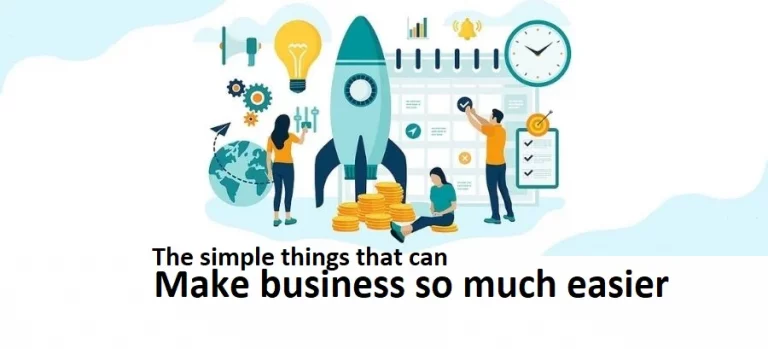Storytelling as a marketing tool
Storytelling is an art that uses skills, creativity, vision, and practice. It has been around for centuries and used in many different capacities. You may wonder how this relates to marketing. Storytelling has become an integral part of effective marketing campaigns, as it sets apart vivacious brands from simpler ones, and helps convert stop-in shoppers to loyal ones. It helps leave your brand image in the customer’s mind.
Storytelling is also a strategy that can be cost-effective and done by anyone. With the help of a reliable internet connection, such as Cox, you can easily market your product or service in the form of a story. Cox internet prices are also reasonable, particularly for online businesses or start-ups who may not want to spend too much on this. Their strong and reliable connectivity will ensure fast uploading speeds and no disruptions in customer engagement.
Storytelling is an exceptionally valuable tool to add to your marketing toolbox. But how can you harness this tool to use it to market your product? To answer that question we have put together this guide to help you learn how to tell stories and create beautiful, convincing stories for your audience.
Storytelling in marketing
Storytelling marketing means using a story to convey a message. The goal is to make the onlooker feel something enough to spur them into action. In marketing, storytelling helps consumers comprehend why they should be concerned and helps to make your brand more relatable. Storytelling in marketing is not limited to movies; it can be told through images, orally, or in writing. Moreover, you can talk about them on all platforms be it on social networks to posters. Stories can be used by marketers to thrive in a market that is (naturally) distracting by creating ads that resonate with their target market.
What counts as an effective story?
While a story being good or bad is dependent on the viewer’s opinion, there are a few necessary features that good storytelling needs to have. They need to be entertaining, educational, universal, memorable, and organized. Three major components of a good story include:
- Persona: Every story has its respective characters, who are the key to creating a connection between your audiences and the story you want to tell. This part is the bridge between you, the storyteller, and the viewers or listeners. If your addressees find the character resonating with them, they are more likely to react to your call to action.
- Issue: This is a lesson in how a character overcomes difficulties. The conflicts in your story evoke emotion and associate with the audience through connected experiences. In storytelling, the power is in what you convey and what you teach. If your story does not have conflict, it probably is not a story.
- Ending: Every good story has an ending, but it does not always have to be good. Your story closing should complete the story, deliver context about the issues and characters, and call the audience to action.
Now that you know what you need to include in your story, let us talk about how to create it.
This is where the narration process comes in.
Illustrators, sculptors, painters, etc. create their artistic process in their art. It helps them know where the initiation line is, how to cultivate their vision, and how to improve their practice over time. The same goes for storytelling, particularly for businesses.
What is the significance of this process? Because as a company or brand, you probably need to convey many facts, messages, or figures in one short story. How do you know where to start? Well, let us start with the first phase of the process.
Analyze your audience
Who will hear your story? Who is more likely to benefit from it and react the most? To write a persuasive story, you need to apprehend your spectators and know who will react and act.
Research your target market and identify your buyers before moving on to putting the ideas on paper. This process tells you who can read, view, or listen to your story. It will also provide important direction for the next few steps as you lay the groundwork for your story.
Clear core message
Regardless of whether your story extends to one page or ten, five minutes or seventy, it should have a clear main idea. Like the base of a house, it must be built before it can move on.
Is your story raising money or selling your product? Does it explain the service or debate for human rights? What is the essence of your story? To determine this, try defining the crux of your story in five to seven words, at least. If you cannot do that, you do not have the main message.
Determine the type of story
Not all stories are the same. The type of story you tell depends on what you want to tell your audience and how they can potentially react. This will require you to determine whether the aim is to incite action, create brand awareness, convey an educational message, encourage community thinking, or impart knowledge.
Inciting actions means retelling a completed action and asking your customers to help by doing the same. Creating brand awareness will involve telling people your brand’s story, how you came into being etc. Valuing conveying would mean using the story to evoke emotions and make the reader relate to your story. Alternatively, you could aim to make a situation relatable or to add to your viewer’s knowledge.
Call to action
Your goal and your call to action (CTA) are the same in some ways, but your CTA defines the action you want your audience to take after reading it.
What actions do you expect from your reader? Do you want donations, subscriptions, or purchases?
The last word
While we have more technology available now than a few years ago, a good story still has a distinct hold. No matter how you choose to tell the stories, if you weave a good thread, with captivating characters, a gripping plot, and a plethora of emotions, you will captivate your audience.







